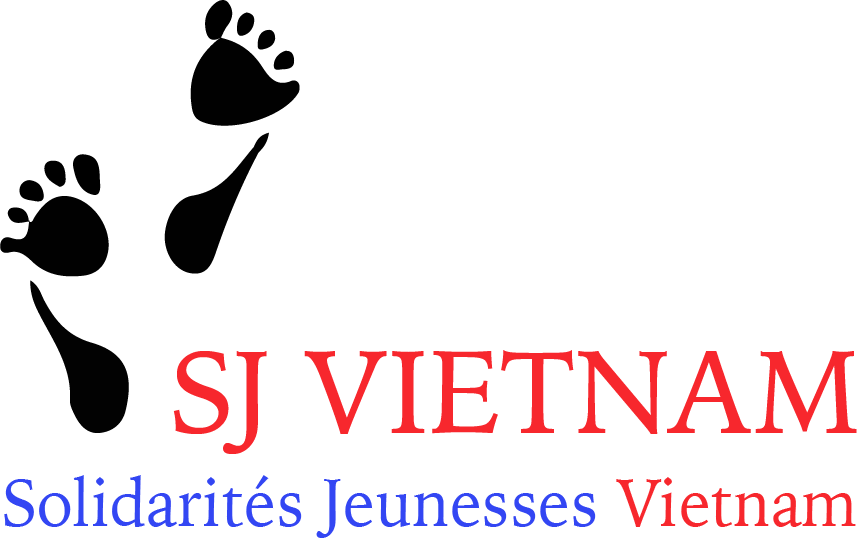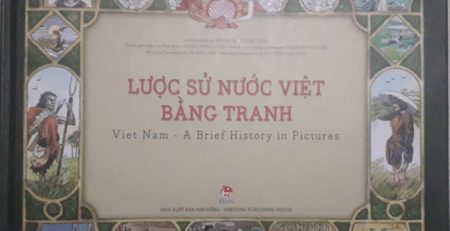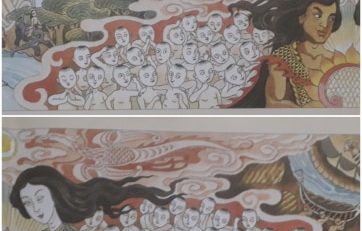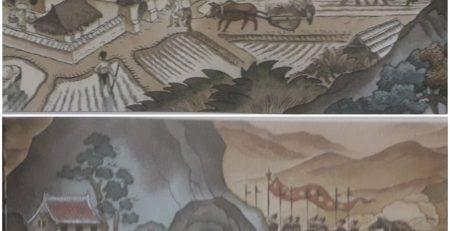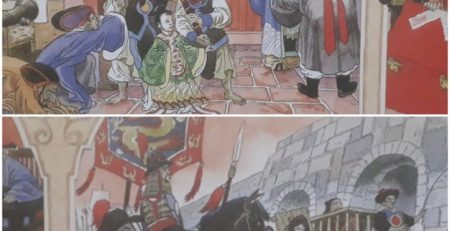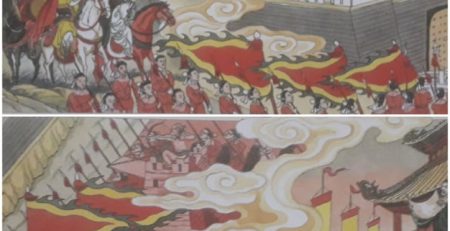Chapter 12 : RESTORED LÊ DYNASTY
After Nguyễn Kim passed away, his son-in-law, Trịnh Kiểm (1503-1507) succeeded him, conspiring to kill the Nguyễn family to usurp all the power. The Trịnh family became increasingly powerful. Nguyễn Hoàng (1525-1623), a son of Nguyễn Kim, had to seek refuge in the remote Thuận Hóa region (nowadays Quảng Bình, Quảng Trị, Thừa Thiên Huế).
In 1592, the South Court’s army, commanded by Trịnh Tùng (1550-1623), launched a decisive assault against Thăng Long. Defeated, the Mạc ran to the border mountainous region of Cao Bằng where they dragged out their existence to 1627. In fact, the two-administration regime came to end. Also in 1592, Trịnh Tùng was conferred kingship, becoming the first Lord of the Trịnh family. Since then, Trịnh Lords hold power from Ngang Pass northwards (called Đàng Ngoài) where the Lê Emperors ruled in name only.
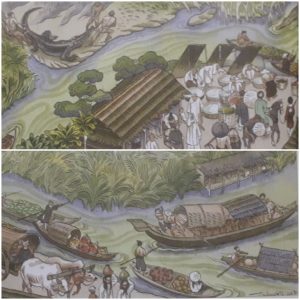
Meanwhile, Nguyễn Hoàng, the former refugee in Thuận Hóa, recruited militia to exploit the region, converting it into a prosperous land. He proclaimed himself king ruling Đàng Trong (from Ngang Pass southwards). He became the first Lord (chúa Tiên) of the Nguyễn family.
The Nguyễn Lords in Đàng Trong adopted many policies placing importance on agriculture. A number of rivers and canals were dug or dredged in Thuận Quảng. Wild lands in the Mekong Delta became fertile rice fields. Markets mushroomed to meet people’s demands for exchanging commodities. Despite the ban imposed by Trịnh and Nguyễn Lords, there existed an unofficial trading channel between Đàng Trong and Đàng Ngoài.
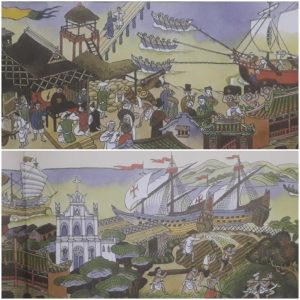
The Nguyễn Lords persisted in the policy of “Southward march”, continuously expanding the territories. In 1757, Lord Nguyễn Phúc Khoát (1714-1765) ruled over the land stretching to Cà Mau, Châu Đốc, Sa Đéc and controlled the territorial waters of Hoàng Sa, Trường Sa. Vietnam’s S-sharped territory then looked quite similar it is today.
Noticeably, in Đàng Trong, three big port-cities were founded Hội An in Quản Nam, Thanh Hà in Thừa Thiên Huế and Nước Mặn in Bình Định, among which Hội An was the most prominent. Major exports were gold, silk, pearls, areca-nuts, dried shrimp, swallow’s nests, holothurians, aloes wood, sugar, pieces, of fine arts, precious timber and so on. Not only trading at markets and foreign commercial stations, Vietnamese merchants also built big barges for ocean-crossing shipments.
Chapter 13 is this way.
VIETNAM – A BRIEF HISTORY IN PICTURES
Compiled by: HIẾU MINH – HUYỀN TRANG (in Vietnamese language)
With an introduction of Historian DƯƠNG TRUNG QUỐC
Illustrated by TẠ HUY LONG
Translated by: NGUYỄN XUÂN HỒNG
P/s: Completed by the volunteers: Nguyễn Ngọc Bích – Second-year student of Foreign Trade University; Takanori Kano from Japan; Antoine Roels from Belgium; Linh – The coordinator of SJ Vietnam.
